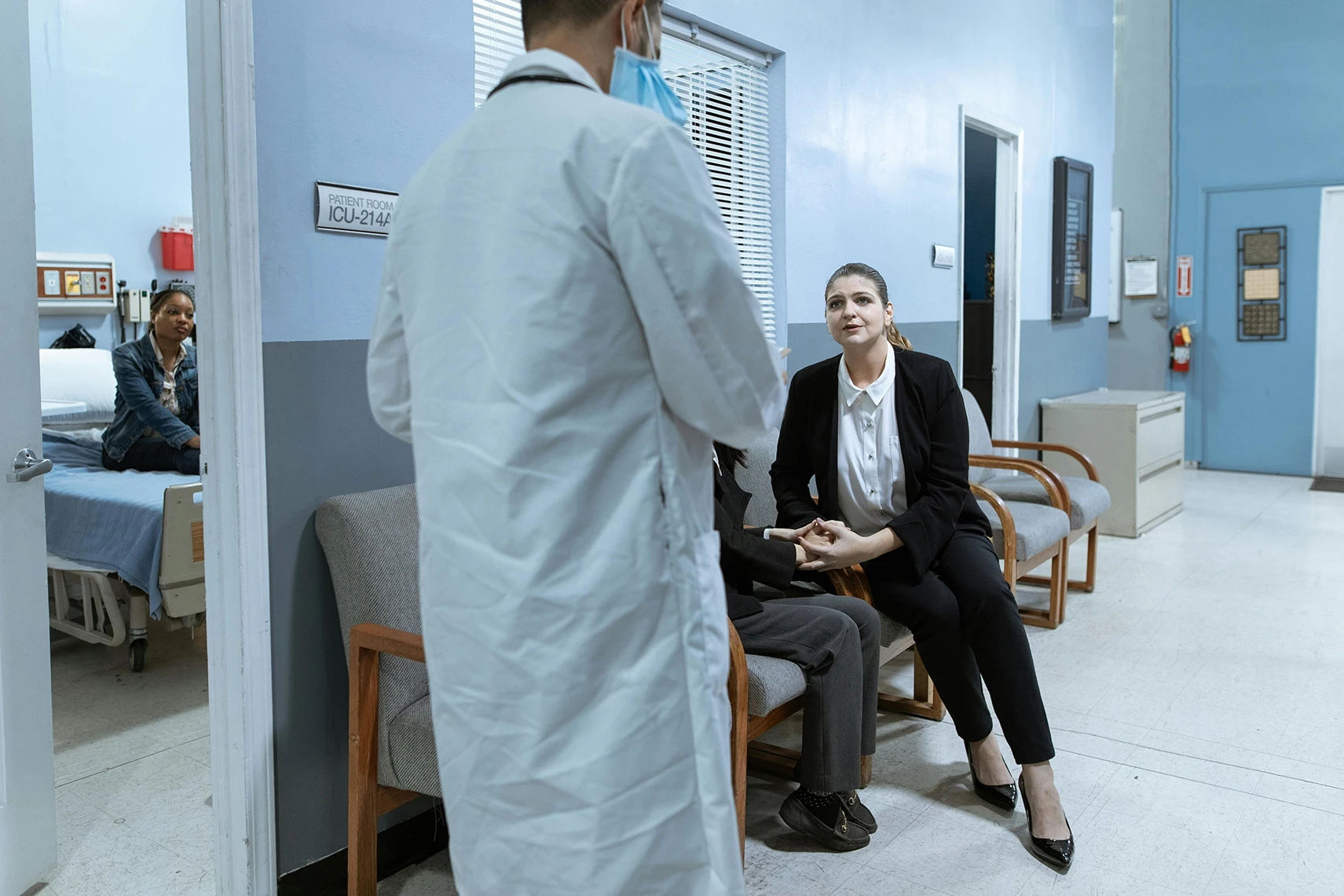The complexities of medical negligence claims – where medicine and law intersect – have been highlighted in a recent decision of the NSW Court of Appeal handed down on 7 October 2022.
Unfortunately, the injured party (“HW”) was not successful in the first instance, or on appeal.
The facts
HW was born with a condition known as pars defect (which is also called spondylolysis). This is best described as an anatomical defect or fracture of bones of the lower spine. In other words, this was a congenital defect. HW had no symptoms of this condition (which is not unusual) until the age of 15, when she began to experience pain in her left hip. This was treated conservatively. When the appellant was 18, she began to work in a childcare centre, a job which required her to repeatedly perform heavy lifting. She developed pain in her left hip again, followed by right hip pain and back pain.
HW saw her GP and was referred for x-rays of the hip and pelvis (“the first x-ray”). While the images showed the pars defect, the defect was not noted as a finding in the report of the radiologist. HW saw an orthopaedic surgeon who relied on the radiologist’s report and diagnosed her with a different condition – inflammation of the hip. The orthopaedic surgeon referred HW to a physiotherapist and recommended conservative cortisone treatment.
A year later, as HW’s symptoms had not resolved and she was now suffering from urinary incontinence, she underwent an x-ray of her spine which showed a forward slipping of one vertebrae in the spine onto the vertebrae below it (known as spondylolisthesis). This was caused by the pars defect. HW was referred to a different orthopaedic surgeon who performed urgent spinal surgery (a decompression and fusion). Although the surgery was performed competently, HW developed a secondary chronic pain syndrome.
The distinction between spondylolysis and spondylolisthesis (the first being less severe than the second) is just one example of the complex medical concepts and terminology that the legal teams, the medical experts and the court, had to understand. It was not helpful that some of the medical terms were interchangeable or had slightly different accepted meanings.
The claim
HW filed a claim for compensation with the court against three defendants. For present purposes, we will focus only on the claim against the radiologist, as this was the subject of the appeal. It was alleged that the radiologist’s failure to identify either spondylolysis, or spondylolisthesis, on the first x-ray was a breach of the duty of care owed to HW and that as a result of this failure, the first orthopaedic surgeon did not appropriately treat HW and that therefore she suffered injury, loss and damage.
The response to the claim
The radiologist admitted prior to the primary hearing that he had breached the duty of care he owed to HW. That is, he admitted that he failed to identify and report on the presence of spondylolysis on the first x-ray.
One might think this was now and open and shut case. If a party admits they have made an error and failed to provide a reasonable standard of care, surely that is enough.
However, breach of duty is only one element of the legal concept of negligence. The injured person in a medical negligence claim must also prove what is known as causation. This is often referred to as the causative link – that is, there must be a connection between the breach of duty and the harm, or damage, actually suffered. To put it simply, the breach must cause the harm.
As the case was presented at trial, HW’s legal team alleged that the harm suffered was the chronic pain condition – that is, the ultimate outcome of the spinal surgery.
What happened in the primary hearing
The primary judge took into account all of the expert reports and the evidence and considered that HW already had the condition of spondylolisthesis at the time of the first x-ray. The primary judge was unable to be satisfied that it was more likely than not that earlier conservative intervention or management would have altered the progression of HW’s condition or avoided the need for surgery.
Therefore, HW had failed to prove that she would, on the balance of probabilities, have avoided the surgery and the adverse consequences of that surgery (the chronic pain syndrome).
The appeal
HW appealed the decision. The Court of Appeal found the primary judge had not made an error in his decision and that, regardless of the breach of duty by the radiologist, HW would inevitably have required surgery. This was supported by the expert evidence which was to the effect that the spondylolisthesis would still have progressed because it is an inherent characteristic of that condition. The medical experts could only say that HW merely had a chance of avoiding surgery.
As the Court of Appeal stated clearly, a chance or even a good chance is not a probability. It did not meet the standard of proof required, as HW needed to prove that it was more likely than not that she would have avoided surgery.
The appeal was unsuccessful.
The Court of Appeal had some comments regarding the way in which HW’s case was run at trial. It was not until close to the conclusion of the primary hearing and later, on appeal, that HW’s legal team changed their argument, by submitting that HW only had the lesser condition of spondylosis at the time of the first x-ray. If this was held to be the case, it meant that HW had a much better prognosis for treatment of that condition and would have avoided the surgery that gave rise to the pain syndrome.
Unfortunately, the opinions expressed by the medical experts called by both parties were based on the premise that HW’s condition on the first x-ray included the more serious spondylolisthesis.
Conclusion
The damages that would have been awarded – if HW had been successful with her claim – were assessed, on a contingent basis, at over $5 million.
Medical negligence claims are high stakes. They are extremely complex, require extensive investigation and careful preparation of the expert evidence and the pleadings. All the elements of negligence – breach, causation and resulting damage – must be made out for an injured party to be successful.
Our dedicated medical negligence team are led by an accredited specialist in personal injury law with many years of experience in this practice area. We invite you to contact us for an obligation-free discussion should you have suffered injury, loss or damage as a result of a failure to diagnose.
See the following link for further information on the case of Williams v Fraser [2022] NSWCA 200.
https://www.caselaw.nsw.gov.au/decision/183ab91cb56e165d48dbb454










